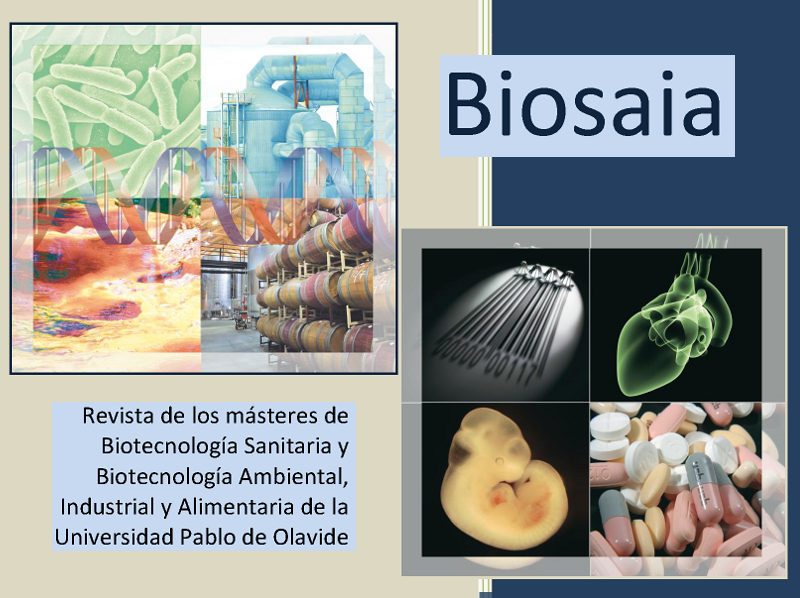Biological control of fungi that cause wood diseases in almond trees
Palabras clave:
Botryosphaeriaceae, Prunus dulcis, biological control agentsResumen
Almond (Prunus dulcis (Mill.) D.A. Webb) is the second woody crop in cultivated area in Spain, after olive. Spain is the world's third largest almond producer after the US and Australia. Almond marketing has been booming due to the great economic impact of the seed worldwide and consumer demand, since it is considered a healthy food. The crop has undergone a revolution by the application of new management techniques, such as controlled irrigation, fertilization, pruning systems, mechanization, the use of new varieties and the implementation of high-density cultivation1. This new scenario has led to the emergence of new almond diseases including those caused by fungi of the Botryosphaeriaceae family. These fungi infect through plant wounds and produce latent infections that shift into disease when the host is stressed. Symptoms consist of cankers on the trunk, branches, shoots and pruning wounds, and branch dieback, sometimes accompanied by gum production, internal tissue necrosis, and occasionally, plant death. Control methods are based on cultural practices and the search for resistant varieties; those methods based on biological control are very scarce or have not been effective enough. Therefore, the objective of this work was to obtain and characterize two collections of rhizospheric and endophytic bacteria as potential biological control agents (BCA) of almond wood diseases. For this, the ability of inhibiting the fungal growth of four Botryosphaeriaceae species has been evaluated in vitro and in planta assays. Strains Fc17 and ACH16 of Bacillus velezensis, AC17 of Pseudomonas aeruginosa (rhizospheric), Sol 1-2 of Bacillus mobilis, and Bel 2-6 of B. safensis subsp. safensis (endophytic) (identified by sequencing of the 16S rRNA) were the most effective in controlling pathogenic Botryosphaeria dothidea, Neofusicoccum parvum, Diplodia seriata and Macrophomina phaseolinain vitro. Strain AC17 was able to reduce the length of the necrotic lesions caused by the inoculation of B. dothidea and N. parvum in detached almond shoots. The production of hydrolytic enzymes, such as β-glucosidase and cellulase, could be related to the mechanism of action of these potential biological control agents.
Descargas
Citas
Ministerio de Agricultura, Pesca y Alimentación (MAPA) (2020), “https://www.mapa.gob.es/es/estadistica/temas/estadisticas-agrarias/agricultura/superficies-producciones-anuales-cultivos/”.
Barreca, D., et al. (2020). Almonds (Prunus Dulcis Mill. D. A. Webb): A Source of Nutrients and Health-Promoting Compound.s Nutrients, 12 (3), 672. https://www.mdpi.com/2072-6643/12/3/672
Gramaje, D. et al. (2012). Fungal trunk pathogens associated with wood decay of almond trees on Mallorca (Spain). Persoonia, 28, 1–13. https://doi.org/10.3767/003158512X626155
Michailides, T. et al.(2006). Chemical and cultural control of band canker of almond caused by Botryosphaeria dothidea. Pages 157-165, In: Proceedings of Almond Board. Almond Board of California, Modesto.
Latorre, B.A. et al.(2013). Evaluation of the use of wound-protectant fungicides and biological control agents against stem canker (Neofusicoccum parvum) of blueberry. Ciencia e investigación agraria, 40, 547-557.
Descargas
Publicado
Versiones
- 2022-03-23 (2)
- 2022-03-17 (1)
Cómo citar
Número
Sección
Licencia
Derechos de autor 2022 Biosaia: Revista de los másteres de Biotecnología Sanitaria y Biotecnología Ambiental, Industrial y Alimentaria

Esta obra está bajo una licencia internacional Creative Commons Atribución-NoComercial-CompartirIgual 4.0.





